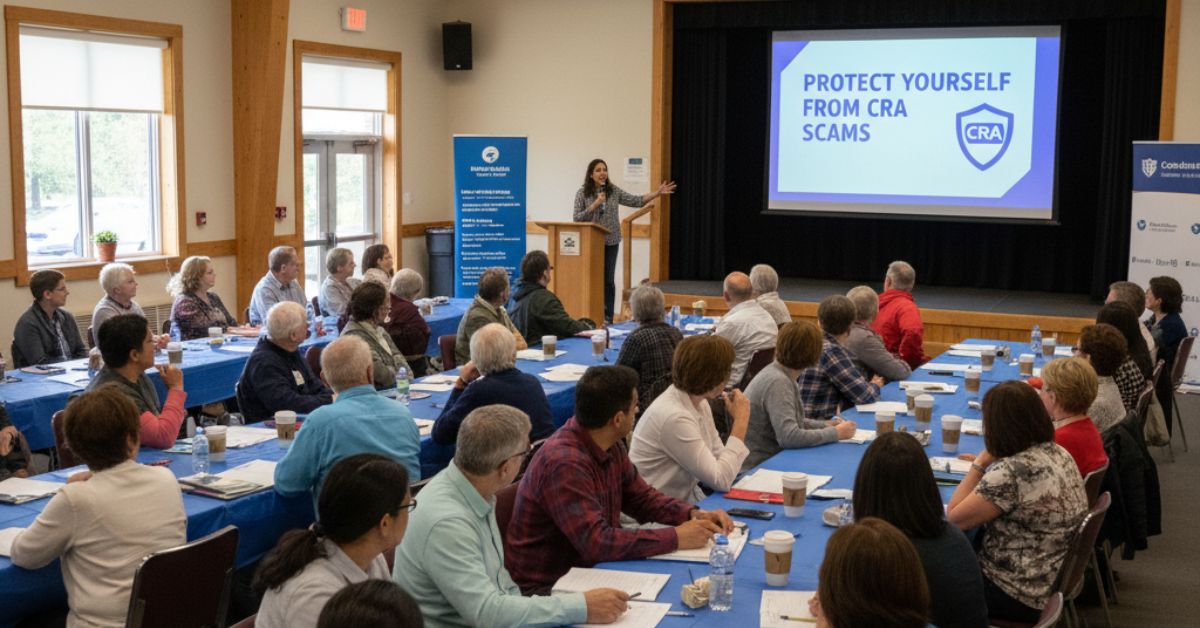Charity Financial Reporting and Compliance in Canada

Running a charity in Canada brings significant financial responsibilities. These go far beyond fundraising and community outreach.
All registered charities must follow strict financial reporting rules set by the Canada Revenue Agency to maintain their charitable status and keep donor trust. Missing these requirements can lead to penalties, loss of tax benefits, or even loss of your charity registration.
This guide breaks down charity financial reporting into clear, manageable steps. We'll explore the legal framework, core reporting requirements, and the consequences of falling behind on compliance.
Overview of Charity Financial Reporting in Canada
Canadian charities must follow specific financial reporting rules set by the Canada Revenue Agency. These requirements ensure organizations remain accountable to donors and maintain their charitable status.
Financial reporting builds public trust.
Purpose and Importance of Financial Reporting for Charities
Financial reporting forms the foundation for charity operations in Canada. We must file annual returns and financial statements to maintain our charitable registration with the CRA.
The Annual Information Return (T3010) is our primary reporting tool. This form shows how we use donations and grants throughout the year.
We must submit it within six months of our fiscal year-end. Missing this deadline can result in serious consequences:
- Loss of charitable status
- Financial penalties
- Donor trust issues
- Legal compliance problems
Financial statements help us track our impact. Donors want to see how their money helps our cause.
Government agencies use these reports to ensure we follow charity laws. We must keep detailed records of all transactions, including donations, expenses, and program costs.
Good record-keeping protects us during CRA audits and reviews.
Key Concepts: Transparency and Accountability
Transparency means we openly share information about our finances. Accountability means we take responsibility for how we use donated funds.
Transparency requirements include:
- Publishing annual financial statements
- Reporting revenue and expenses clearly
- Showing how much goes to programs versus administration
- Disclosing executive compensation
Accountability measures involve:
- Following donor restrictions on gifts
- Meeting minimum spending requirements (disbursement quota)
- Maintaining proper internal controls
- Having board oversight of finances
The disbursement quota requires us to spend at least 3.5% of our assets on charitable activities each year. This ensures donated money helps our cause rather than sitting in investments.
We must also issue proper tax receipts for donations. These receipts must include specific information required by the CRA.
Incorrect receipts can cause problems for both donors and our organization.
Types of Charitable and Non-Profit Organizations
Canada recognizes different types of charitable and not-for-profit organizations. Each type has specific reporting requirements we must follow.
Registered charities include:
- Relief of poverty organizations
- Advancement of education groups
- Advancement of religion organizations
- Other purposes benefiting the community
Not-for-profit organizations that aren't registered charities also exist. These groups follow different rules and cannot issue tax receipts for donations.
We must determine which category fits our organization. This affects our reporting duties, tax benefits, and operational requirements.
Charitable organizations must spend their funds on charitable purposes. Non-charitable groups have more flexibility in their activities but receive fewer tax benefits.
Legal and Regulatory Framework for Charity Financial Reporting
Canadian charities operate under a structured legal framework managed by the Canada Revenue Agency's Charities Directorate. The Income Tax Act serves as the primary legislation governing registered charities.
This law establishes tax-exempt status requirements and ongoing compliance obligations.
Overview of the Canada Revenue Agency and Charities Directorate
The Canada Revenue Agency (CRA) oversees all registered charities in Canada through its Charities Directorate. This division monitors charity operations to ensure compliance with federal tax laws.
The Charities Directorate uses a risk-based approach to promote compliance. Most charities follow the rules and only need guidance occasionally.
This allows the CRA to focus on organizations that pose higher risks.
Key responsibilities of the Charities Directorate include:
- Processing charity registration applications
- Reviewing annual information returns (T3010)
- Conducting compliance audits
- Investigating complaints about charities
- Revoking charitable status when necessary
The CRA maintains detailed records of all registered charities. We can search this public database to verify an organization's charitable status and review their filed documents.
Role of the Income Tax Act and Other Relevant Legislation
The Income Tax Act (ITA) provides the legal foundation for charitable organizations in Canada. Section 149.1 specifically outlines the requirements for maintaining registered charity status.
Under the ITA, charities must meet strict operational requirements. These include spending quotas, prohibited activities, and governance standards.
Failure to comply can result in penalties or revocation of charitable status.
Key ITA requirements include:
- Annual disbursement quota (minimum spending on charitable activities)
- Prohibition on political activities beyond permitted limits
- Restrictions on business activities
- Requirements for proper books and records
Provincial legislation also affects charities. Each province has incorporation laws that govern how charities organize and operate.
Charities must comply with both federal tax rules and provincial corporate laws.
Registered Charity Status and Its Implications
Registered charity status provides significant benefits but comes with substantial obligations. Tax-exempt status means charities don't pay income tax on most revenue types.
Charitable status allows organizations to issue official donation receipts. Donors can claim tax credits for their contributions, making charitable giving more attractive.
This tax benefit is a major fundraising advantage.
Benefits of registered charity status:
- Exemption from income tax
- Ability to issue donation receipts
- Access to certain government grants
- Enhanced public credibility
Regulatory requirements are extensive. Charities must file annual T3010 returns with detailed financial information.
These returns become public records that anyone can access and review.
Loss of charitable status has serious consequences. The organization loses tax-exempt status and can no longer issue donation receipts.
The CRA may also impose revocation taxes on remaining assets.
Core Financial Reporting Requirements for Charities
Canadian registered charities must file comprehensive annual financial statements with the Canada Revenue Agency. This applies regardless of activity levels or financial balances.
These requirements include specific statement components, strict deadlines, and adherence to accounting standards.
Annual Financial Statements: Components and Standards
All registered charities must submit complete financial statements when filing their T3010 annual information return. The statements are mandatory even if our charity had zero activity or balances during the fiscal period.
Required Statement Components:
- Statement of assets and liabilities (balance sheet)
- Statement of revenues and expenses (income statement)
- Prepared notes detailing accounting policies
Essential Notes Include:
- Depreciation rates and accounting methods
- Investment details with maturity dates and interest rates
- Revenue sources and government grant specifications
- Non-arm's length party transactions
- Donor-directed funds held for 10+ years
- Future financial obligations
We must follow Accounting Standards for Not-for-Profit Organizations (ASNPO) set by the Canadian Accounting Standards Board. Charities with annual revenues over $250,000 should obtain professionally audited statements.
Smaller organizations can have their treasurer sign the financial reports. Our statements must accurately reflect all revenue sources and expenditures for the reporting fiscal year using consistent accounting methods.
Reporting Deadlines and Submission Procedures
The T3010 registered charity information return must be filed within six months of our fiscal year-end. This deadline applies to all registered charities regardless of size or activity level.
Filing Requirements:
- Complete T3010 form submission
- Attached annual financial statements
- All required supporting documentation
Missing financial statements result in an incomplete filing. The Canada Revenue Agency considers incomplete returns as non-compliance.
This can lead to penalties or charity registration issues.
We can file our return electronically through the CRA's online portal or submit paper copies by mail. Electronic filing provides faster processing and confirmation of receipt.
Late filings may result in monetary penalties and compliance reviews. Repeated non-compliance can lead to charity registration suspension or revocation.
Statement of Financial Position and Related Statements
The statement of financial position (balance sheet) provides a snapshot of our charity's financial health at fiscal year-end. This statement lists all assets, liabilities, and net assets in a structured format.
Assets Section:
- Current assets (cash, receivables, inventory)
- Long-term investments and property
- Equipment and capital assets
Liabilities Section:
- Accounts payable and accrued expenses
- Long-term debt obligations
- Deferred revenue amounts
We can prepare financial statements using either cash basis or accrual basis methods. Cash basis records actual money received and spent during the fiscal year.
Accrual basis records earned revenue and incurred expenses regardless of payment timing. The chosen method must be clearly identified on our financial statements and used consistently throughout the entire return.
However, gift receipts must always use the cash method regardless of our primary accounting approach. Net assets represent the difference between total assets and liabilities, showing our charity's accumulated financial position over time.
Compliance and Record-Keeping Obligations
Canadian charities must maintain proper accounting records and follow strict documentation requirements to meet CRA standards. These obligations include keeping detailed financial records, issuing compliant donation receipts, and establishing strong internal controls to protect charitable assets.
Maintaining Adequate Accounting Records
We must keep complete and accurate accounting records for all financial transactions. The CRA requires these records to be maintained for six years from the end of the tax year they relate to.
Our accounting records must include:
- Bank statements and reconciliations
- Receipts and invoices for all expenses
- Donation records and supporting documentation
- Payroll records and employment files
- Minutes from board and committee meetings
We must store these records in Canada and keep them available for CRA inspection. We can keep records in electronic format, but they must be easily accessible and readable.
Financial documentation should track restricted and unrestricted funds separately. This helps us demonstrate compliance with donor restrictions and proper fund usage.
If you want clear, actionable tips for charity accounting and compliance, check out our Top 5 Essential Accounting and Financial Management Guidelines for Canadian Charities and Non-Profits.
Requirements for Donation Receipts and Documentation
We must issue official donation receipts that meet CRA requirements.
Only registered charities can issue receipts that qualify for tax deductions.
Required information on donation receipts:
- Charity's registered name and registration number
- Receipt number (sequential)
- Location where receipt was issued
- Date receipt was issued
- Date donation was received
- Donor's name and address
- Amount of donation
- Description of advantage (if any)
- Eligible amount for tax credit
- Authorized signature
We cannot issue receipts for services, time, or labour.
Only cash donations and gifts-in-kind qualify for official donation receipts.
Our receipt system must use sequential numbering.
We keep copies of all receipts and maintain donor records that match our receipts.
Internal Controls and Best Practices
Strong internal controls protect our organization from fraud and support proper financial management.
We should separate financial duties among different staff members whenever possible.
Key internal controls include:
- Requiring two signatures on cheques over a set amount
- Monthly bank reconciliations by someone who doesn't handle cash
- Regular review of financial statements by the board
- Annual budget approval and monitoring
- Documented accounting policies and procedures
We should reconcile donation records with bank deposits regularly.
This helps identify discrepancies quickly and maintains donor confidence.
Board members should review financial reports monthly.
This oversight helps ensure funds are used properly and accounting policies are followed.
Best practices include setting spending limits for staff and requiring board approval for major expenses.
We should maintain separate bank accounts for restricted funds when necessary.
For practical tips on strengthening your charity’s financial oversight, explore our guide to effective charity accounting and financial management.
Auditing and Review for Charities
Canadian charities face specific audit requirements based on their size and revenue thresholds.
The Canada Revenue Agency monitors compliance through audits that can range from educational letters to serious penalties.
Audit and Review Requirements by Organization Size
Audit requirements for Canadian charities depend on annual revenue thresholds.
These requirements ensure transparency and accountability to donors and the public.
Small Charities (Under $10,000)
Charities with annual revenues under $10,000 typically don't need professional audits.
We can prepare basic financial statements internally, but we must still maintain accurate records and file our T3010 return.
Medium Charities ($10,000 - $500,000)
Charities in this range may need compilation or review engagements.
A compilation involves an accountant preparing financial statements from our records, while a review engagement provides limited assurance that statements are reasonable.
Large Charities (Over $500,000)
Charities with revenue over $500,000 usually require full audited financial statements.
An independent auditor examines our records and gives an opinion on whether statements fairly present our financial position.
Provincial regulations may also apply.
Some provinces have different thresholds or additional requirements beyond federal rules.
Selecting and Working with Auditors
Choosing the right auditor is crucial for effective financial oversight.
We should select professionals who understand charity operations and compliance requirements.
Auditor Qualifications
We need auditors who are licensed public accountants with charity sector experience.
They should understand Canadian Accounting Standards for Not-for-Profit Organizations (ASNPO) and CRA regulations.
Engagement Process
The audit engagement starts with planning and risk assessment.
Auditors examine our accounting records, test transactions, and verify financial statement accuracy.
They also assess our internal controls and compliance procedures.
Communication and Cooperation
We must provide complete access to records and staff during audits.
Clear communication helps auditors understand our operations and address issues early.
This cooperation leads to more efficient audits and better recommendations.
Responding to CRA Audits
The Canada Revenue Agency conducts compliance audits using risk-based selection criteria.
We need to understand this process and respond properly to maintain our charitable status.
CRA Audit Selection
The CRA selects charities for audit based on risk indicators like late filings, unusual financial patterns, or public complaints.
Random selection also occurs as part of ongoing monitoring.
Audit Process Steps
CRA audits usually begin with a notification letter outlining the scope and timeline.
We must provide requested documents and cooperate with CRA auditors.
The process can include interviews with staff and detailed examination of our records.
Possible Outcomes
Minor issues may result in educational letters with guidance for improvement.
Serious non-compliance can lead to penalties, sanctions, or loss of charitable status.
We have the right to respond to audit findings and appeal decisions through established procedures.
Consequences of Non-Compliance and Strategies for Ongoing Compliance
The Canada Revenue Agency takes charity compliance seriously.
Penalties can range from education letters to complete loss of registered status.
Organizations must use strong oversight systems and avoid reporting mistakes to protect their charitable registration and maintain donor trust.
Penalties and Loss of Registered Status
The CRA uses a graduated approach when charities fail to meet their reporting obligations.
Enforcement starts with education letters that guide organizations through compliance steps.
Compliance agreements come next.
These formal documents outline specific areas where our organization failed to comply, and we must commit to correcting these issues within set timeframes.
More serious non-compliance leads to sanctions:
- Financial penalties
- Suspension of tax-receipting privileges
- Loss of qualified donee status
- Temporary suspension of charitable registration
Revocation is the most severe consequence.
We lose our registered status and all associated privileges, including issuing donation receipts and receiving government grants.
The CRA considers several factors when determining penalties:
- Length of non-compliance
- How the issue arose
- Resources involved in the violation
- Impact on charitable purposes
Common Mistakes and How to Avoid Them
Filing incomplete or late T3010 returns is a frequent compliance failure.
We must submit these annual returns by the deadline, usually six months after our fiscal year-end.
Financial statement errors can cause significant problems.
Our statements must follow Canadian accounting standards, and qualified professionals should prepare or review these documents.
Inadequate record keeping causes compliance issues.
We must keep detailed records of all transactions, donations, and activities for at least six years.
Governance failures often trigger CRA attention.
Our board of directors must meet regularly and document decisions properly.
We need written policies for conflict of interest, fundraising, and program delivery.
Misuse of charitable funds is a serious violation.
We cannot use funds for non-charitable purposes or provide inappropriate benefits to directors or stakeholders.
Implementing Policy and Board Oversight
Strong governance starts with an engaged board of directors.
We need directors who understand their legal responsibilities and our charitable purposes.
Regular board meetings ensure proper oversight.
Our directors review financial reports, approve budgets, and monitor program effectiveness.
Meeting minutes document all decisions.
Written policies protect our organization.
We should develop policies covering:
- Financial management and controls
- Fundraising practices
- Conflict of interest procedures
- Executive compensation
- Risk management
Internal controls safeguard our financial health.
We separate duties, use approval processes for expenditures, and conduct regular financial reviews.
We require multiple signatures for significant transactions.
Annual compliance reviews help identify potential issues.
We assess our financial position, review reporting obligations, and ensure we meet all deadlines.
This proactive approach maintains stakeholder confidence and protects our registered status.
Conclusion
Staying compliant with CRA reporting requirements protects your charitable status and builds donor trust. Keep accurate records, file returns on time, and maintain proper governance to avoid costly penalties.
Strong internal controls help you focus on your mission instead of regulatory problems. Regular reviews and clear policies prevent common mistakes that trigger CRA audits.
Professional accounting support makes compliance manageable and protects your organization's future. Get expert help from Charity Accounting Firm to simplify your financial reporting and keep your charity compliant.
Frequently Asked Questions
Canadian charity leaders often have questions about financial reporting requirements and compliance obligations. Here are clear answers to the most common concerns about CRA regulations and best practices.
What do charities need to report in Canada?
Canadian registered charities must file the T3010 Annual Information Return within six months of their fiscal year-end. This includes complete financial statements, revenue and expense details, program information, and governance data. All charities must report regardless of their activity level or financial position.
How long do charities need to keep financial records in Canada?
Charities must keep all financial records for six years from the end of the tax year they relate to. This includes bank statements, receipts, donation records, payroll files, and board meeting minutes. Records must be stored in Canada and available for CRA inspection.
What is the statement of recommended practice for accounting and reporting by charities?
Canadian charities follow the Accounting Standards for Not-for-Profit Organizations (ASNPO) set by the Canadian Accounting Standards Board. These standards require specific financial statement components including balance sheets, income statements, and detailed notes explaining accounting policies and transactions.
Do nonprofits have to release financial statements in Canada?
Registered charities must make their T3010 returns and financial statements publicly available through the CRA's online database. Non-charitable nonprofits have different disclosure requirements depending on their provincial incorporation rules, but generally face less stringent public reporting obligations.
Do charities need to prepare financial statements?
Yes, all registered charities must prepare annual financial statements regardless of size or activity. Charities with revenue over $500,000 typically need audited statements, while smaller organizations can have internally prepared statements signed by their treasurer or an officer.
How do you ensure compliance with financial regulations?
Maintain accurate records, file T3010 returns on time, and follow CRA guidelines for charitable activities. Implement strong internal controls, conduct regular board oversight, and consider professional accounting help. Regular compliance reviews help identify issues before they become serious problems.
























